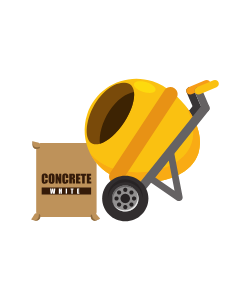Insight for a Successful New Concrete Surface Installation
A new concrete project to install a driveway, sidewalk, or patio needs to have the right preparation and management of the installation to make sure the concrete lasts for years. Here are some recommendations for you to use as you install a concrete surface and maximize your success in the project.
Prepare the Area
The site on which you will be pouring concrete is going to need a bit of preparation before you can pour the concrete onto the area. First, you need to evaluate the soil in the area to make sure it does not have the wrong type of drainage in the soil and there are no underground utility lines. If you pour your concrete over an area where lines are installed, you may need to demolish the concrete if you ever need work done on the lines. And you don't want to excavate several layers of concrete to find that you have cut into a utility line just below the soil.
A drainage layer of gravel is a good way to keep your concrete surface well-drained and to provide support for a solid concrete surface. A compressed layer of angular gravel will give you the right amount of structure and drainage, but you can also use sand or existing soil if it contains the proper drainage qualities.
The moisture of the foundation layer can have an effect on the concrete's success. Your concrete needs to retain its moisture after it has been poured so that it can cure properly over a period of the next one to two days. If the environment is too dry, it will pull moisture from the fresh concrete and cause it to cure too quickly, leaving you with concrete that is prone to spalling and cracking later on. Spray down the prepared site with water just before you pour the concrete. This will make sure the gravel or soil does not pull moisture from the concrete when it is poured and protects the concrete's integrity while it cures.
Finish the Concrete Surface
As the concrete is poured, whether from a concrete truck or a portable mixer, you will need to begin smoothing and leveling the surface, as the concrete will start to cure quickly. A big part of this smoothing and leveling is to make sure there are no pockets of air in the concrete but also that any large pieces of gravel are pushed down into the concrete to prevent later spalling.
The edges of the concrete need to be finished with a concrete edger, and control joints need to be added to the surface to protect the concrete against cracking when it shrinks during the curing process. You can add in control joints with a groover when the concrete is still soft or later on with a diamond saw when it has hardened.

